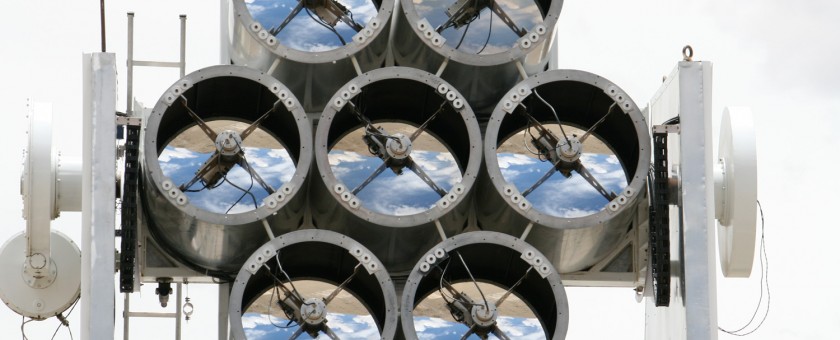
The Light of Things Hoped For…
- posted in: astronomy, expedition
I joined the Amateur Astronomers Association in New Delhi in July 1999 in my second year at the College of Art in New Delhi. At the time I thought it might be the closest thing to a science fiction convention in the city. What I discovered was a diverse, dynamic group of mathematicians, physics and astrophysics students, photographers, entrepreneurs, academics and dreamers, each uniquely individual, who came together every Sunday afternoon at 2:00pm on the roof of the Nehru Planetarium over chai. Conversations ranged from the latest telescope or new electronic observing aid to the latest science fiction film (or lack thereof). Others eagerly talked about the romance of the heavens. Still others seem obsessed with the implication of observations of the latest nova on theories of stellar evolution. What unites them is a common love for the phenomena, a deep respect for nature, and a desire to share the joy of observing and chasing, both with other amateurs and with the general public.
I have since been an active member, polishing mirrors for telescopes, going to Hakdarpur, in the middle of a very cold, very wet field to see the Leonid Meteor shower in 2000, and learning a lot more about navigating Delhi’s night sky both in the Planetarium dome and on field observations during our monthly ‘Star Parties’. Huddled around telescopes, we would gather in fields, rooftops and parking lots to enjoy celestial light shows in the night sky.
Beginning in July 2009 through to August 2010, I have traveled back and forth across the country with amateur astronomers as part of the process, each trip focused on a stellar event or site. From Patna in July 2009 for the longest total solar eclipse, Varkala in January 2010 for the Annual Eclipse, the Leonids Meteor shower to Mecca’s of astronomy such as the Indian Astronomical Observatory at Hanle, Ladakh July 2010 and the Giant Meter Wave Radio Telescope array just outside Pune, August 2010.
All these trips were extraordinary, these sites, hidden away from most civilization, far from any towns and villages are almost symbolic of the individuals that populate them. The astronomers too escape the city as often as possible to find the stars, unspoiled and comparatively untouched. I realized while in Leh and Pune that I do a very similar thing right here in Delhi. I drift through or rather across the city, never really touching down completely. Astronomy offers that form of escape, offers these sites of pilgrimage; (I can call an eclipse chaser’s journey nothing else) far from people and place.
The largest part of the project thus, is the interviews and audio recordings made with 20 amateur astronomers in Delhi. The questions varied but some are consistent. Each conversation was fluid and took its own course, depending on the individual and the interaction through the conversation. Why they began. Why they continue. What they imagine astronomy’s role and vision to be. Transforming moments that consolidated their passion.
We talked about the history of ‘observation’ and how it evolved from cult like beginnings to become a recognized form of science. How Astronomy is unique by virtue of being the oldest of the observational sciences and because of all the scientific fields, there will always be a need for the amateur simply because there aren’t enough people looking at the stars. What it requires of the imagination and the psyche to deal with a deep time science, spanning thousands of years. Astronomy as a form of archaeology. The position of the ‘amateur’. The schizophrenic juxtaposition of the virtual versus the real and the anxieties and false expectations that produces.